Calculus for Kids May 17, 2015 (Sundays)
This is the story of the fifth and final meeting of the Sunday Natural Math Circle doing activities inspired by calculus.
The first activity was making a flip book out of cards. To figure out the size of designs, we used LEGO blocks. How many blocks fit on the card in a row? Will it still fit if you re-position it? For a 3×5 inch card, a line of four blocks fit every which way.

Eli, Mark, and Chris are trying and testing things for the project. Our instructions tend to be open, such as “try using a clip”. This way participants get in the habit of problem-solving.
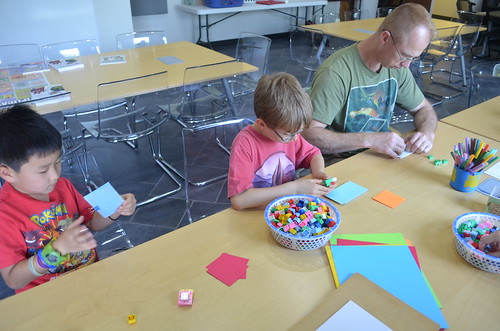
Yash made a measuring square to approximate positions of shapes on paper.
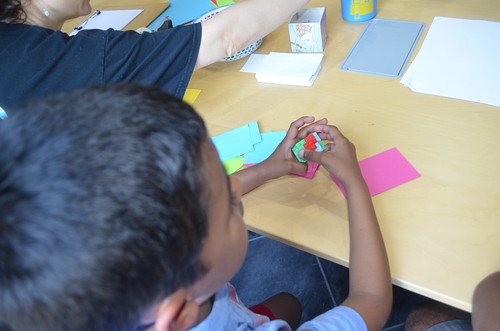
Maria demonstrating how to fold small squares of paper (measured out to be no more than 4 LEGO blocks across). We folded them into 4, 6, and 8 layers through the middle, then cut across. What shapes do we get?
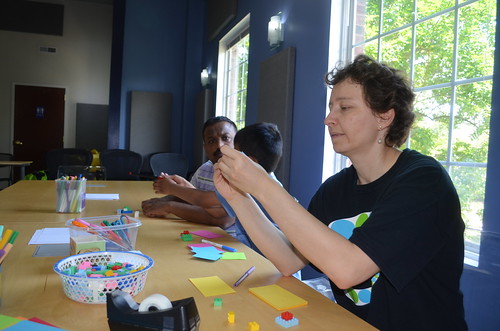
Eli’s checking out his shape.
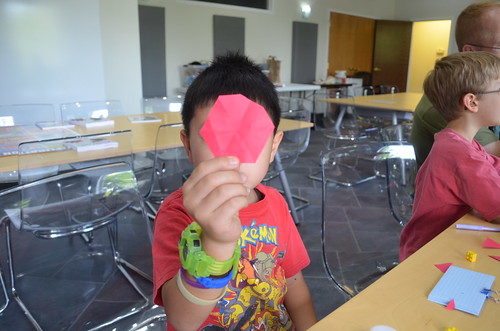
Chris and Mark, Krishnan and Yash, and Maria and Eli are making 6-fold shapes, which are challenging. While people have no problems estimating folds into 2 parts (and then 4, 8, 16…) – folding into 3 parts is hard.

It’s also challenging, with any fold, to cut the paper in such a way that both sides are about the same. It’s tempting to cut at the right angle to the nearest side instead. If at first you don’t succeed, cut and cut again!
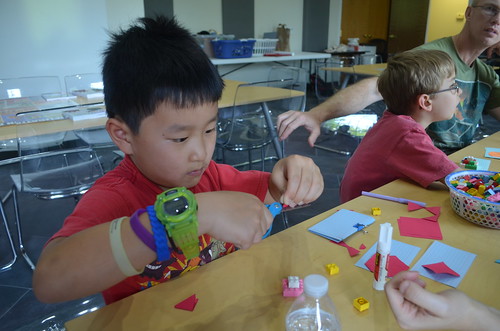
4-fold and 6-fold shapes glued onto cards. Is the 4-fold shape a square or a diamond?


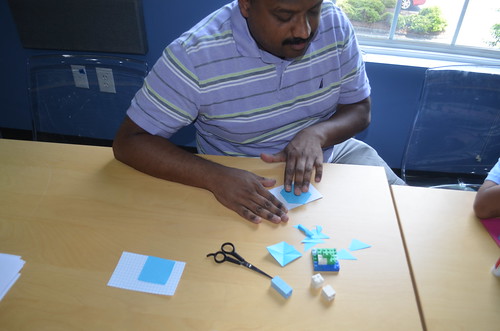
Mark is drawing figures on his shapes.
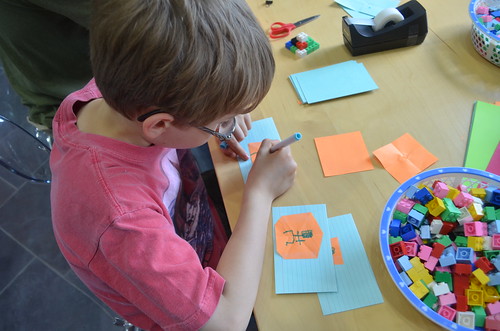
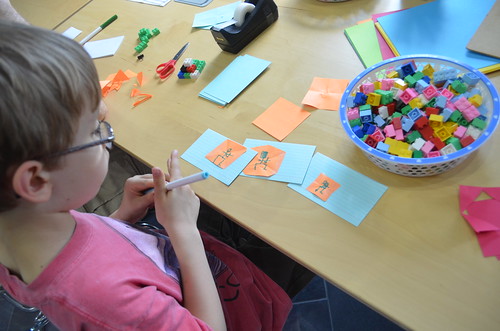
Smile! Mark is ready to animate the flip book.
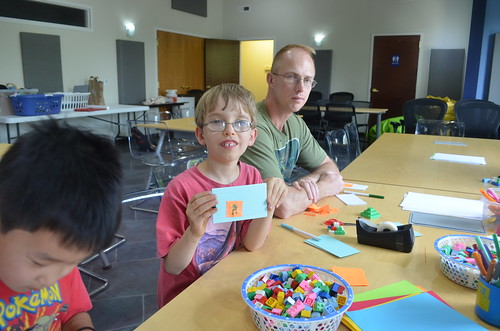
The participants are peaceful, working at their own pace drawing, cutting, measuring, and animating ready flip-books.
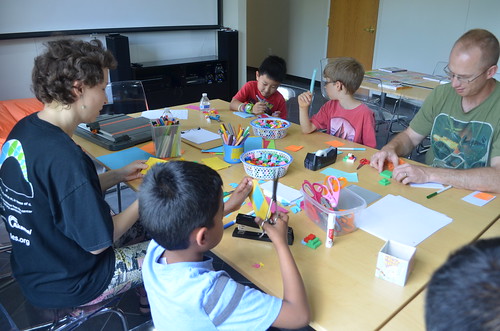
After finishing the flip book, the group moved to the next table for the math snack time – always a happy time. Children wanted to straighten a banana like last week, which Yash wanted to see since he wasn’t there.
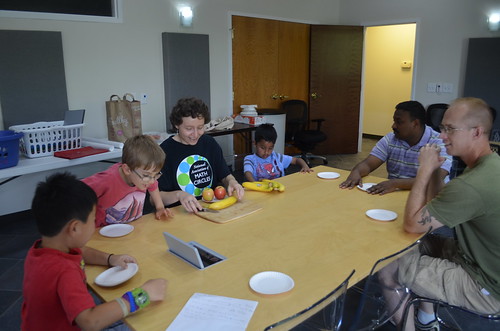
Mark and Eli demonstrated the technique from the last week: rotate every other slice 180 degrees.
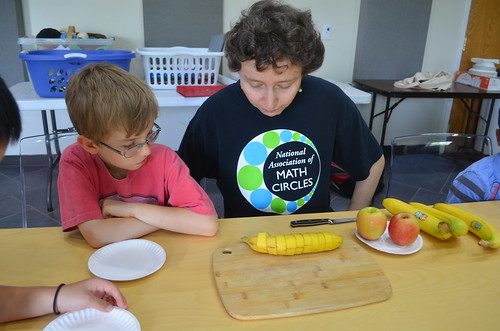
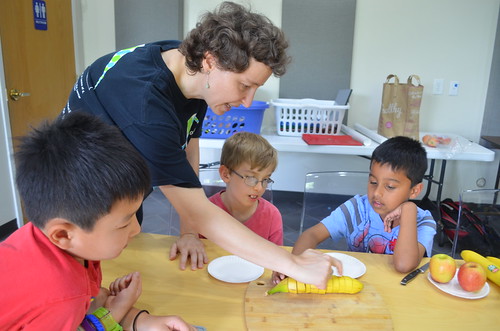
Next, we are going to play with an apple. Can we straighten this circular slice?
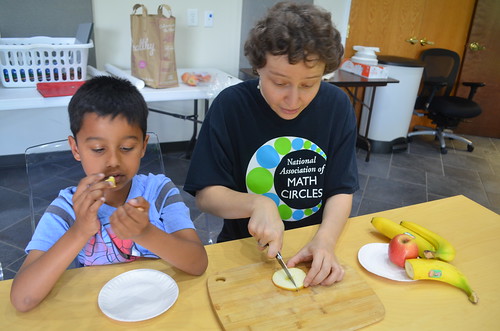
Children are reusing the banana technique, rotating every other section of apple the other way.

Instead of a circle, they got an approximate rectangle.

Maria asked grown-ups if they can see Pi in this, and they wanted to borrow her “math goggles” for the purpose. So the adults asked children to play elsewhere, since they were getting tired, and held their own math circle.
If you straighten out the peel from a banana slice, you see the length of the circumference.
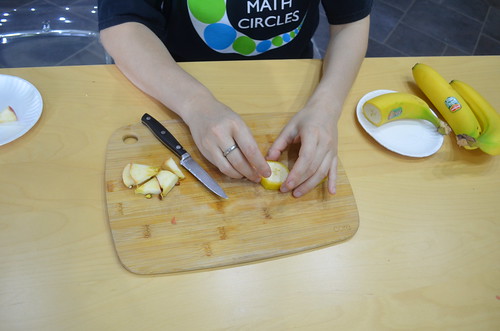
How long is it? Pi is the ratio of the circumference (banana peel) to the diameter (the slice of banana cut across).
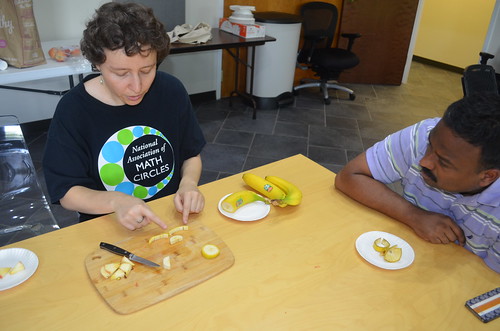
That outrageously simple way to see Pi had participants thinking seriously on what their school math classes really meant. After all, that happened way back in the previous millenium!

The peel is three slices across, and a bit more. The circumference is three diameters and a bit. Pi=3.14… And not any kind of Pi, but banana Pi!
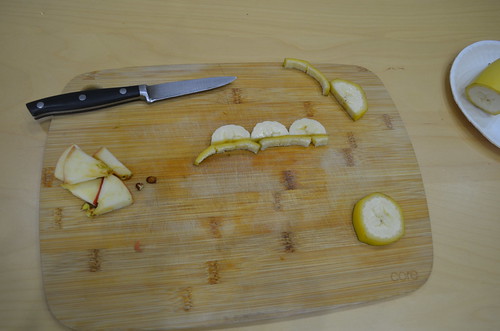
What about apple Pi? When we alternate the pieces, the rectangle is half a circumference long and one radius wide. The ratio of its length to its width is Pi again! This time, apple Pi. Next time, it would be interesting to slice different round fruits, to straighten the circles into rectangles, and to observe how all the rectangles look like scaled-up versions of the same shape, since their length:width ratio is always Pi.
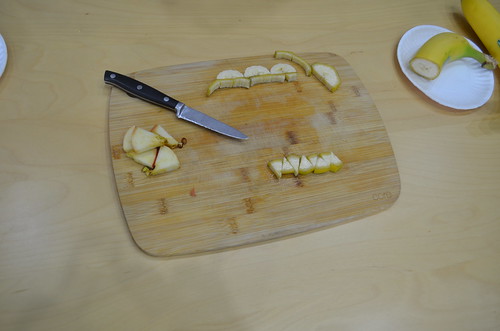
Returning to the table, we are about to make round things out of straight and rectangular paper.
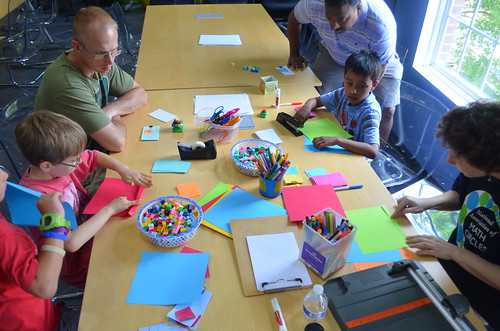
We are folding the paper as if we’re making fans in an alternating zig-zag pattern, just like we alternated fruit slices: it all comes together.
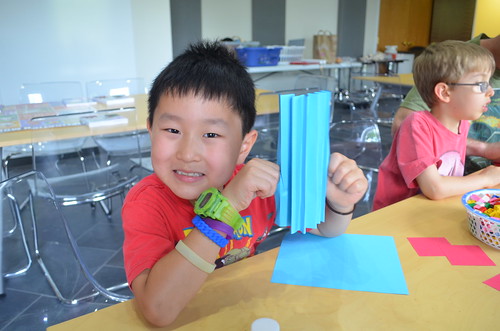


Can you curve the straight paper?
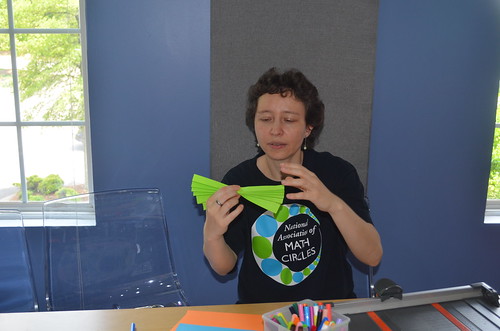
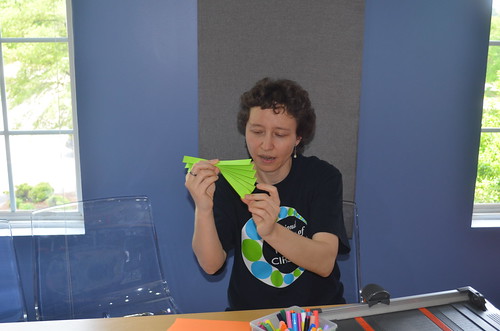
These folded papers will become wings of creatures. Mostly dragons. Everyone drew their creatures, then cut them out:
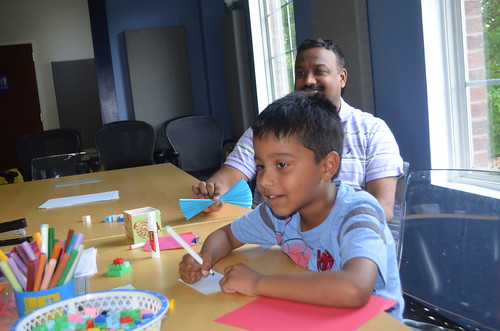
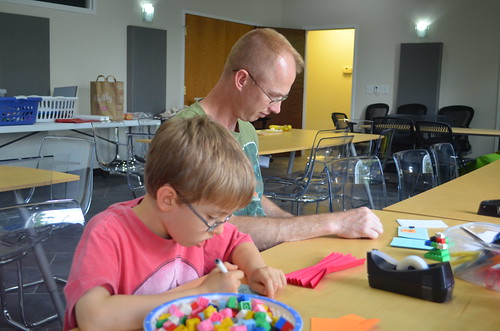

The wings go into a slit cut in the middle of the creature’s body.
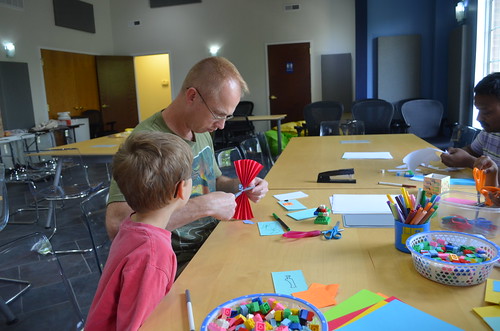

Picasso would be proud.

Group pictures – make silly faces for the press!
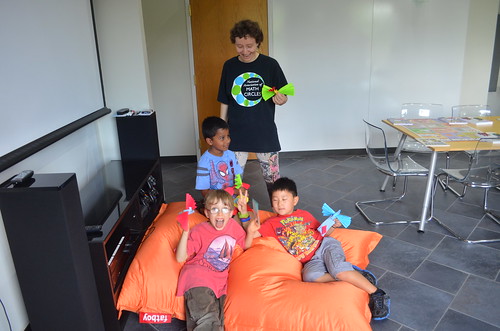
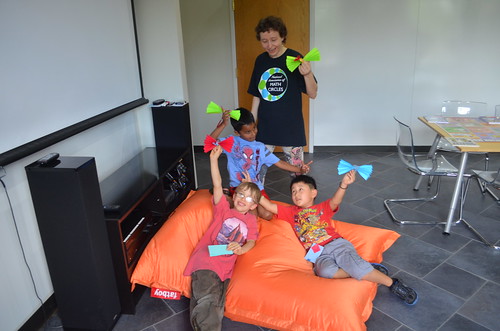
Happy times.

Photos by Erin Song, captions by Erin Song and Maria Droujkova, Math Spark by Kalid Azad, Shelley Nash, and Maria Droujkova, edited by Ray Droujkov.
Related Posts
Posted in Make







[…] did. I looked on lynda.com, I looked on youtube, and poked around the internet in general. Then Maria Droujkova pointed me in the direction of something called Wallpaper Groups, and guess what, I landed on […]